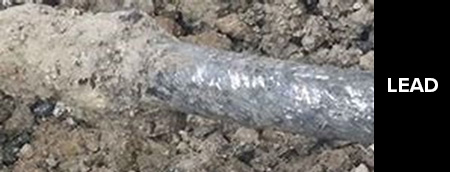Did the interactive map say Lead Status Unknown – Needs Verification on your property?
If you are lead status unknown, please feel free to request a water sample test kit, and a water pitcher with a Brita filter certified to remove all lead in drinking water. To request a water sample test kit or water pitcher with Brita filter certified to remove, please click the link below.
M.U.D. will be identifying if you have a lead, galvanized steel or copper service line in your home. Galvanized steel service lines may be lead lined or have goosenecks that are made of lead material. Services that contain lead materials pose known health risks.
M.U.D. is currently reviewing its records for all water service line material types in our community. If your home was built prior to 1940 and we do not have record of your water service line material type, we will be contacting you to perform a “potholing” process.
During the potholing process, M.U.D. and/or its contractor will be digging small holes to see the underground pipe in four different places, from the main to your water meter.
When the potholing process is completed, M.U.D. and/or the contractor will contact you with the results. If we find you have a lead or galvanized steel water service line, your home will be included in the Detect. Correct. Protect. Lead Service Line Replacement Program. You will be contacted when it’s your neighborhood’s turn for replacement. The program is expected to take approximately 10 years.
-
If your pipe is:
COPPER: The pipe may appear dull brown on the outside but will be the color of a bright penny if gently scratched.
A magnet WILL NOT stick to a copper pipe.
LEAD: The pipe will appear dull and soft but will turn a shiny silver color when scratched.
A magnet WILL NOT stick to a lead pipe.
GALVANIZED STEEL: The scratched area will remain a dull gray.
A magnet WILL stick to the surface.
-



Ways You Can Check for Lead
If your home was built before 1986, lead may also be present in indoor piping, solder and fixtures. Here are some ways you can check for lead:
- Have your water tested. To request a test kit, please click the link below.
Request Form - A licensed and insured plumber can inspect your pipes and other plumbing for lead or steel.
- Replacing an older brass faucet or valve may be a simple way to reduce the lead in water.
If you have any questions, please call 402.504.7029 between 7:30 a.m. – 4:00 p.m., Monday – Friday, or email us at [email protected].
To find more information on reducing exposure to lead in drinking water, visit mudomaha.com/lead.






